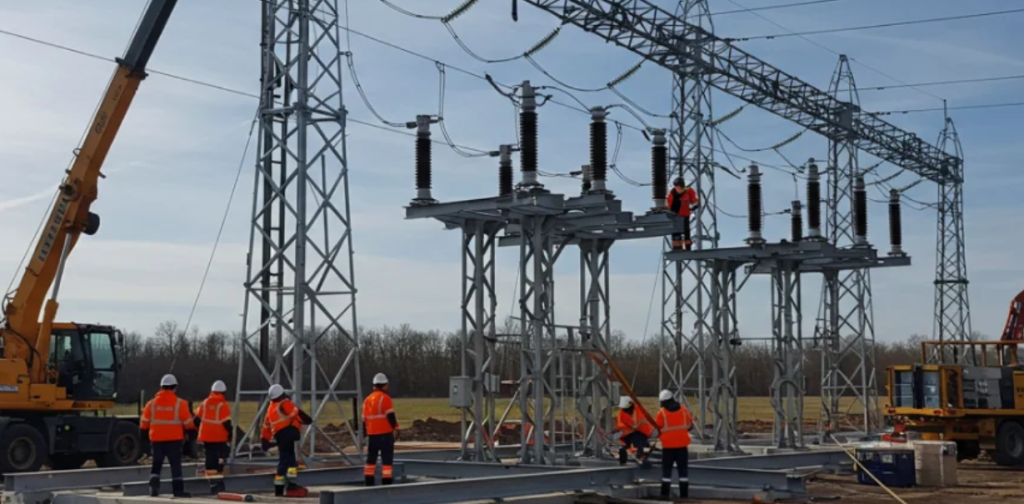ISO9001 Certified Substation Structure: The Gold Standard
2025-07-20
Introduction
A Quality Management System (QMS) is a prerequisite and an integral part of any organization's framework in the modern and dynamic world of the power sector. During your procurement of a substation structure, one phrase that should catch your attention is: ISO9001 certified substation structure. What does it entail? Why should it matter? Most importantly, how does it safeguard your infra investment? We will try to answer these questions and more in an informal approach with reasonable propositions to the complex concepts that require explanation.
What is an ISO9001 Certified Substation Structure?
The ISO9001 certified substation structure is a strategic document concerning the registration of a company’s quality management system branch (QMS), which is most recognized globally. As far as substation structures are concerned, it means that the manufacturing, testing, and documentation functions for the structure are completed following the international standards. These standards include steel fabrication, welding, and design validation. They also entail, but not exclusively, validation, traceability, and assurance of the entire structure and all its components.
Here at XY Tower, we take pride in our substation structures manufacturing as they are ISO9001 certified, thereby guaranteeing reliability and essential performance.
The Significance of ISO 9001 Certification in Substation Structures
In the power of infrastructure projects, ISO 9001 certification is more than a compliance checklist; it is a critical assurance of quality management. Below are notable key points:
1. Quality Control for Substation Structure Components
Your electrical substation structure’s components are designed, manufactured, and tested with ISO 9001 certification, guaranteeing every level of quality control. Material selection, assembly, and everything in between are carefully managed, and best practices are applied globally. This ensures unmatched structural integrity.
2. Globally Acknowledged
With over 160 countries adopting these ISO standards, your ISO-certified substation structure is now eligible for international relations and collaborations in energy partnerships.
3. Consistent Results
Certified structures guarantee dependable outcomes for certified independent audits and multi-tier quality assurance systems, resulting in repeatable performance and dependable execution in subsequent projects.
4. Risk Mitigation
Welds, load tests, and IEC/IEEE compliance done on substations by certified contractors lowers the possibility of downtime, damage, or safety risks significantly.
5. Enhance Project Value
From utility-scale construction to complex grid projects, compliance with project requirements in an ISO 9001 framework increases the credibility of the project. It gives assurance to clients, and sometimes investors, that the structure surpasses the expected benchmarks of quality.

Critical Aspects of ISO9001 Compliance Substation Structures
• Steel Lattice Structure
Utilized in Transmission and Distribution (T&D) networks, this steel is used for lattice structures and possesses high tensile strength.
• Transformer Support Frames
Supports transformers for busbar structures framed to withstand extremely high electrical forces.
• Gantry and Busbar Supports
Components for effective and safe transfer of power make these systems critical.
• Control Panel Stands and Insulator Mounts
Relatively fine components are crucial to maintaining necessary voltage confines and conductive paths to ground.
• Grounding Mesh and Earthing Systems
Protection against short circuits, ground faults, and lightning strikes is essential to ensure the safety of the substations.
Why Substation Steel Structures ISO9001 is Important?
A substation structure comprises a set of steel frameworks supporting the main apparatus mounted within an electrical substation. These structures are critical in the transmission and distribution of electrical energy. Substation structures help in the transmission and distribution of electrical energy. They streamline and secure the flow of electricity.
Purpose and Function
Substation Structures support high-voltage apparatuses including transformers, circuit breakers, busbars, and insulators. Their main purpose is to function as a stable platform that secures essential electrical clearances throughout power delivery and enhances operational safety.
Materials and Design
Substation structures are primarily composed of ERW (Electric Resistance Welded) Steel or hot-dip galvanized steel due to their superior strength and resistance against corrosion.
The design takes into account operational load, wind pressure, and seismic forces.
Environmental Resilience
These structures are designed to withstand damage from earthquakes, high winds, and significant temperature changes. Their performance under extreme conditions allows continuous functioning of equipment and ensures operational safety.
Safety and Protection
Substations include grounding and fencing, along with electrical isolation capabilities, which protect personnel and equipment from potential dangers such as short circuiting and arc faults.
Scalability and Flexibility
The certified substation structures are purposefully designed with ample opportunity for expansion, incorporating adaptable geometric designs to satisfy the changing needs of grid interconnection systems and power demand.
Advantages of ISO9001 Certification in Substation Fabrication
Purchasing a substation structure from an ISO9001-certified manufacturer means that you have more than just a steel structure; it is an investment you can rely on. Here is how it benefits your project:
1. Enhanced Structural Safety
ISO9001 compliance guarantees consistency and accuracy in the welding and bolting of each component, which translates to every structure being assembled with operational safety metrics precision. This precision helps enhance structural integrity by lowering operational failure risks under stress.
2. Weather and Seismic Event Resilience
Having an ISO certification improves a company's resilience to external natural disasters. When integrated with a seismic-resistant substation structure, it additionally strengthens the wind and earthquake readiness of the infrastructure.
3. Controlled Operational Costs
Due to the application of hot-dip galvanized steel and protective anti-corrosion coatings, ISO certified structures not only reduce maintenance and repair expenses but also extend their operational cost over time.
Why it Matters for EPC Contractors and Utility Companies
The confidence that EPS Contractors, Utility Boards, and Government Organizations have in ISO 9001-certified manufacturers of power substations is well-known. These entities trust them to provide secure and scalable energy solutions.
They tend to seek:
• Substation designs are compliant with ISO 9001 standards.
• Modular designs for substations.
• Utility grade substation equipment.
• Smart grid-ready infrastructure.
Selecting a suitable vendor is critical as it can either enhance or undermine project success.
Use for Certified Substation Structures
ISO 9001-certified substation structures now serve varied regions and industries for critical infrastructure needs. These are the areas where their impact is the greatest:
• Projects for expanding national grids
Countries striving to expand and reinforce national grids require dependable systems capable of high-capacity power transmission. Certified substation structures ensure consistent operation.
• Integration of Solar and Wind Energy Sources
With the shift toward clean energy, solar and wind energy facilities require upgraded substation frameworks. Harsh remote regions can still benefit from using substations made from ISO certified steel, which is functional in such places.
• Electricity Delivery to the Outlying Regions
Providing electricity to the outlying areas of a country demands novel approaches that need to be light-weight, affordable, and durable. Structures that are compliant with ISO9001 offer all of these requirements.
• Commercial and Industrial Sectors
There is a need for dependable electrical infrastructure service within Commercial and Industrial areas. Certified substations ensure operations while meeting safety guidelines, which makes these areas free from power interruptions.
• Upgrading Urban Grids
The construction of smart cities and the ongoing modernization of urban grids rely on substations designed with international benchmarks that provide compactness and operational efficiency.
Conclusion
For substations, the unwavering integration of strong quality assurance into fabrication processes is essential, not optional. Substation structures attaining ISO 89001 certification carry international recognition for safety, long-term performance, and reliability. With an ISO 9001 certification, the structure demonstrates a commitment to quality.
Structural compromises should never be made when building or modernizing electric grids. Always choose uncompromised structures that fully comply with the most demanding standards. XY Tower is now your go-to leader in power infrastructure. Visit now.

Hey, I’m Chunjian Shu
"X.Y. Tower: Reliable, innovative solutions for high-quality towers and electrical equipment with professional service.
